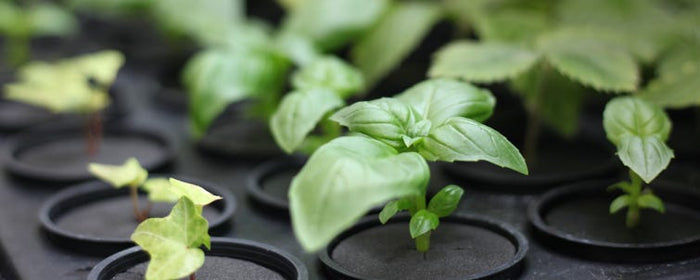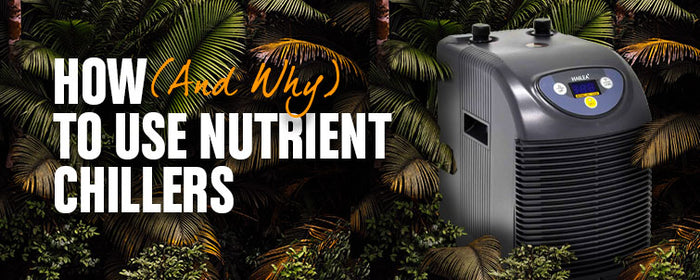
Keep Up! 8 Key Tips for Foliar Spraying
Think you know about foliar spraying? Here are a few things you may not know.
Why Foliar Spray?
Plants get a lot of nutrients quickly when you foliar feed.
They absorb and use nutrients sprayed to leaves almost instantly…way more efficiently than nutrients added to media.
Foliar feeding is a great way to:
- Correct deficiencies
- Bulk up your yield
- Improve plant health
- Improve rooting conditions (yes – really)
- Feed plants when roots aren’t performing well
- Speed up the rooting of cuttings and seedlings
A lot of large scale growers only foliar feed for all of these reasons!
Dan Gulliver from Biobizz touches on the benefits of foliar feeding in this video.
How does it work?
Nutrients and stimulants move into leaves via diffusion.
This is where particles move
from an area of high concentration (foliar feed)
to areas of low concentration (the leaf)
Like how heat from your hot tea diffuses into your colder cup.

Just remember that diffusion works both ways...
If there’s a higher concentration of nutrients in the leaf than your foliar feed...
...you can end up pulling nutrients out of the leaves!
That’s why you always use a strong solution when foliar spraying.

There are lots of factors that increase or decrease the rate of diffusion. These are mostly:
- Environmental conditions (e.g. temperature & humidity)
- State of leaves (e.g. age, stage of leaf development, cuticle thickness and waxes)
Myth Buster
Some people think that foliar sprays enter leaves through small pores in the leaf, called stomata.
This is unlikely, due to:
- The shape of stomata
- The low wettability of the pore surface
- The high surface tension of most sprays
However, studies do show that leaves with more stomata absorb more nutrients.
Why? Nobody knows. There are lots of theories, though.
The most likely one is to do with guard cells – cells that regulate the opening and closing of stomata.
Their surface is thought to be more permeable than the leaf cuticle - even more so when stomata are open. They could be the preferred entry point, but there’s not enough evidence to say for sure.
8 Key Tips for Foliar Spraying
1. When (time of day)
Spray when the humidity is high, and temperature isn't too high.
For most, this is just as lights are coming on. Less spray evaporates, and there's more time for it penetrate into the leaf.
If you spray at this time, raise lights up high when spraying.
Another good time to spray leaves is just as lights go off.

2. When (time in cycle)
It’s normally fine to spray once a week during the vegetative period and early flowering. Doing this is a great way to correct nutrient deficiencies quickly.
Don’t spray large flower clusters heavily as this could lead to fungal diseases (like botrytis!). Follow the guidelines on your foliar spray and you won’t go wrong.

3. How to apply
Don’t just spray the tops of leaves - you want to spray where stomata (and their guard cells) are mostly found.
Normally, this is on the underside of leaves.
Make sure you completely cover the top and bottom of leaves.
4. How much to apply
Cover leaves evenly with spray, but not to the point they’re dripping wet! It’s fine if you get a bit of run-off. Any more than that and you’ve over sprayed.
5. Which sprayer to use
Unless you buy a ready-to-use spray bottle, you need to buy a good sprayer.
Bottle sprayers are fine if you've only got a few plants.
Use one with an adjustable nozzle and use it to create a fine mist.
Try to use a sprayer with a lance so you can reach the underside of leaves
In large grow rooms, maybe use a nebuliser.

6. When correcting a nutrient deficiency
Make sure the spray solution is strong enough to diffuse into the leaves.
Products like SHOGUN CalMag have a dilution rate of 10-15ml per L for foliar spraying.

7. When rooting cuttings and seedlings
To keep the humidity high in your propagator, spray the lid with water rather than the cuttings.
Use a specific plant feed or rooting foliar spray, like Clonex Mist or VitaLink Plant Start.
8. Use a wetting agent
Wetting agents lower the surface tension of the spray solution. This means sprays will better stick to the leaf, and droplets are less likely to form.
This makes it easier for the spray solution to enter the leaf.
Most products designed to use as a foliar spray already have a wetting agent in the feed. We recommend using SHOGUN Geisha - it'll boost flowering sites by 5%.




